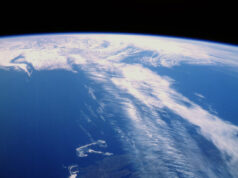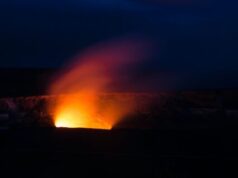Sarqardliup glacier in west Greenland.Image Credit: Shfaqat Abbas Khan
Earlier recent work has shown that the east, southeast and northwest regions of the Greenland ice sheet have contributed to 77% of the total mass loss over the last century. Now, researchers have used gps data to show that the east, southeast and northwest also contributed significantly to ice mass loss in the past, over thousands of years: about 40% of the total loss of ice mass. The researchers, amongst which Utrecht University climate researchers Bert Wouters and Peter Kuipers Munneke, are publishing their results in Science Advances on 23 September.
The researchers also measured the changes in height of the land masses under the melting ice. When land ice melts, the land underneath rises, since the ice no longer weighs it down. The researchers found that land masses in the southeast of Greenland have risen by about 12 millimeters per year. The results indicate that these basins have solely contributed to an ice mass loss corresponding to global sea level rise of 1.5 m over the past millennia. It seems likely, therefore, that further destabilisation of these ice sheet regions will continue to be the main source of sea-level rise in the future, the authors say.
Strongly scaled representation of the rising Greenland bedrock as ice melts away and the surface load decreases (animation: Ioana S Muresan)
Past and present-day mass loss
Find your dream job in the space industry. Check our Space Job Board »
Mass loss of the Greenland ice sheet has increased over the last twenty years, mainly because glaciers are accelerating and the surface of the ice sheet is melting faster and faster. However, due to a lack of in situ observations in key regions it is still difficult to accurately establish how much mass the ice sheet loses over a period of thousands of years and how much it contributes to global sea-level rise. The research also shows that some calculations of present-day mass loss of the Greenland ice sheet may be underestimated: the new measurements show that Greenland loses about 7 percent of ice per year more than previously assumed.
Source: Utrecht University
Research Reference:
S. A. Khan, I. Sasgen, M. Bevis, T. van Dam, J. L. Bamber, J. Wahr, M. Willis, K. H. Kjaer, B. Wouters, V. Helm, B. Csatho, K. Fleming, A. A. Bjork, A. Aschwanden, P. Knudsen, P. K. Munneke. Geodetic measurements reveal similarities between post-Last Glacial Maximum and present-day mass loss from the Greenland ice sheet. Science Advances, 2016; 2 (9): e1600931 DOI:10.1126/sciadv.1600931











